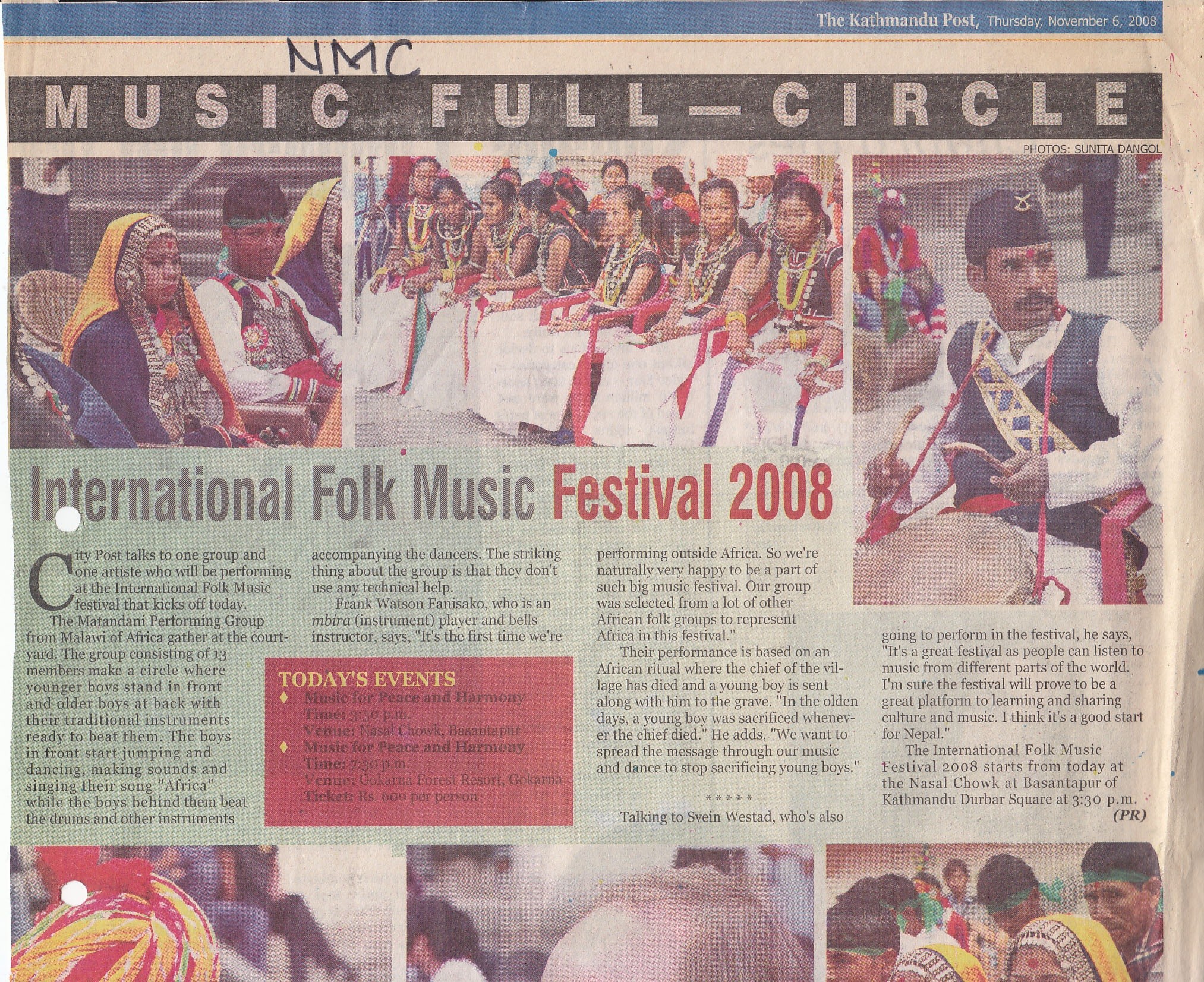It has also taken up an initiative to create a digital platform that accommodates Nepali music for online sales. And most importantly, it established the first music school of the country, Nepal Music Center, which is working to promote formal music education. The Nepal Music Center hosted this year’s international festival, and was also the venue for one of the concerts.
The festival was a meeting of eastern and western Culture. Musicians and dancers from countries as far as South Africa, Malawi, Norway and Palestine, as well as India and Nepal, performed the folk music of their homelands and had an exchange of ideas and culture amongst themselves. The Nepalese contribution included a group representing each of the development regions of the country.
Each of the four days of the festival had a theme. The opening theme for the festival was ‘Music for Peace and Harmony’. The holy courtyard of Hanuman Dhoka filled with invited guests and the press as the cultural show began, with its rich sounds and vibrant colors. Even the flock of pigeons that lives there seemed to be entertained. As culture expert Satya Mohan Joshi put it, “This is a courtyard with historical significance, and I hope this day of the International Music Festival makes its own history.”
The second concert of the day was at Gokarna Forest Resort which was equally amazing. The theme was ‘Music for Poverty Alleviation’. Two concerts were performed at the same time, one in Patan and the other in the Nepal Music Center itself. Patan Durbar square and the people who came to attend the concert seemed more than inviting. The Palestinian group seemed to catch everyone’s attention with the fluid like melody lines. The Dhime Group from Patan, too, had a positive impact on the audiences.
The third day was the high point of the festival. As the concert in Arohan Gurukul Theater ended with applause, the stage in the historical garden of dreams was set. Some of the audience seemed to be amazed by the beauty of the venue, even after the concert began. The dance group form Malawi, Matandani, and Ismael Pops Mohamed took the audience on a journey to the jungles of Africa. After the African group’s performance the audience was in love with Africa. The Norwegian trio Seven Winds then surrounded the audience with a sweet ambience of Norwegian country side. They sang of friendship between an old man and an old oak tree, of a river and of ice which brought chills in the skins of the listeners.
On the fourth day of the festival, the artists performed in Lainchaur ground. It was all about fusing Nepali folk music with Norwegian and Palestinian folk music. A popular Nepali sarangi (a traditional Nepali stringed instrument) virtuoso Suman Nepali played with Norwegian munneharp (mouth harp) player with the beats of tabla (an Indian drum). The dusty air didn’t seem to affect the audience, who were amazed by the new and fresh sounds.

